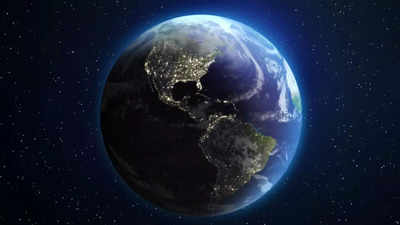- News
- Science News
- Does Earth really have 7 continents? New study reveals a hidden supercontinent beneath the surface
Does Earth really have 7 continents? New study reveals a hidden supercontinent beneath the surface
A University of Derby study led by Dr. Phethean proposes Earth has six continents, not seven. Using advanced geological techniques, researchers suggest North America and Eurasia might be connected via tectonic plates beneath the Atlantic Ocean, contradicting traditional beliefs. Iceland's geological role reveals a hidden subcontinent, potentially redefining continental drift and global maps.
A new study by Dr. Jordan Phethean, leader at the University of Derby, suggests that Earth has only six continents and not seven as conventionally accepted. The study challenges a time-honored assumption about the existence of totally separate North America and Europe separated by the Atlantic Ocean. The use of advanced geological techniques made the team find that North America and Eurasia might be connected by tectonic plates even beneath the surface, and this role of Iceland was the core of this theory. This could totally alter the knowledge of the geography of Earth; global maps may be revised and new information may be provided to the world about what may happen in the future with tectonic movements.
This study unmends the long-cherished belief pertaining to the geographical features of our Earth, informing us that instead of seven, there are six continents and that North America and Europe remain connected physically if not traditionally despite the Atlantic Ocean. The research advocates for a detailed exploration of some of the greatest mysteries of geology on the Earth. It is possible to have a new paradigm concerning our vision of how our continents must have moved throughout geological time should such findings be established.
New findings suggest North America and Europe remain connected, revealing a shadowy subcontinent
Geologists were holding it to be true millions of years back that the continents had rifted apart, and the Atlantic Ocean had separated North America from Europe. However, through advanced methods of geological inquiry, researchers lately discovered that the plates of tectonics of North America are not separated at all from that of Eurasia perhaps. This results in the detection of a shadowy supercontinent, which can be said as still being somehow joined under some part of this earth.
Iceland's role in the recent study
This new theory holds a great place for Iceland. Iceland is well known for volcanic eruptions and the inhabitants of this place have long believed it to be a tectonic hotspot. However, this new finding creates a situation in which Iceland, along with its associated Greenland-Iceland-Faroes Ridge, features behaviors seen in two separate tectonic plates. Therefore, naturally, these areas would be figured as part of a larger, yet undiscovered geologic structure connecting the continents with one another.
As per study, this relationship is a "Rifted Oceanic Magmatic Plateau." This finding defies the classic understanding of Iceland as an isolated hotspot, suggesting instead that it might be part of a hidden continental landmass. If true, this would dramatically change our understanding of continental drift and the dynamic nature of Earth's tectonic plates.
New study could redefine Earth’s continents and change global maps
This theory may even change the world map and turn the seven-continent model into a six-continent one if this holds. Furthermore, the study hints that these tectonic connections may have something to do with future land movements and may shape Earth's geography in ways not yet fully understood. Earlier, Dr. Phethean's work had suggested that there could be an underwater protocontinent off the eastern coast of Greenland, which means the whole ocean floor is periodic. Someday, this discovery will take the scientists to predict future changes in the Earth's surface accurately.
Also Read | Discover the alien planet where winds rage at 33,000 km/h, offering a glimpse into exoplanetary weather
End of Article
FOLLOW US ON SOCIAL MEDIA
Hot Picks
TOP TRENDING
Explore Every Corner
Across The Globe


